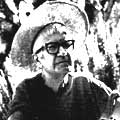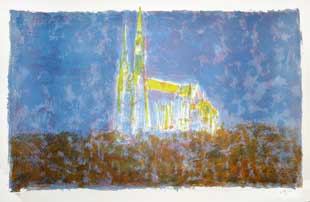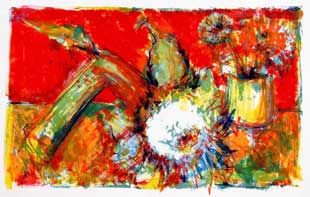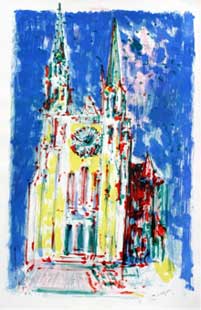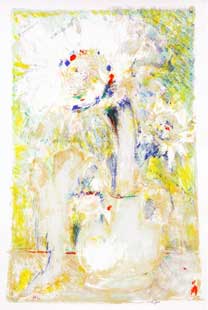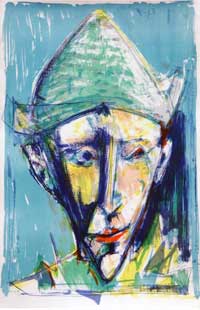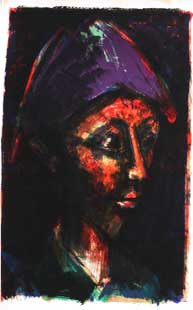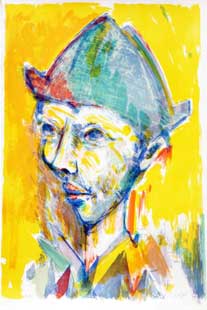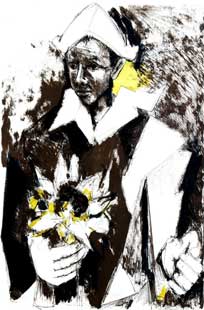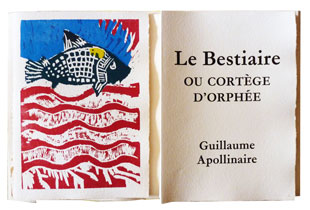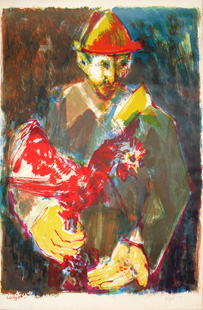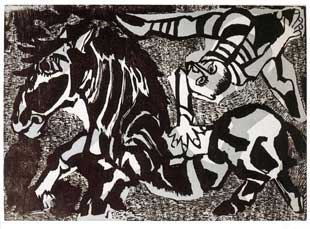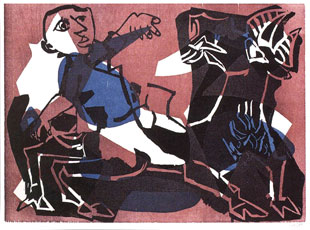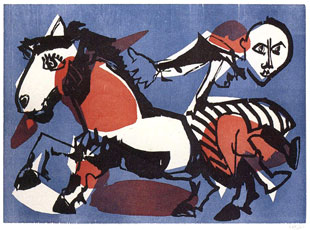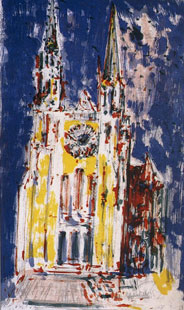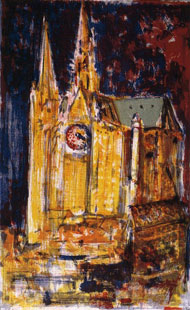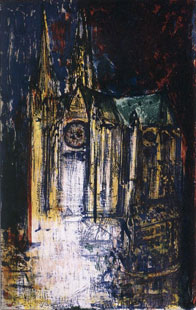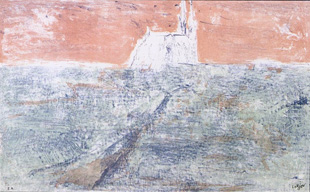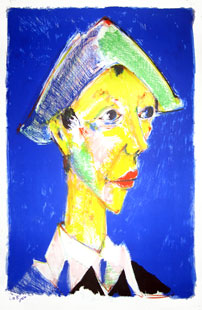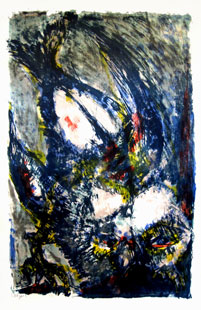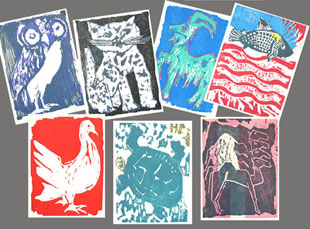Bernard Lorjou was born in 1908. Touring Spain in 1931, he was much struck by the works of Velasquez and Goya. In the years that followed, his painting was influenced by social and political events, and from 1938 to 1944, he painted the horrors of war.
He was awarded the French Critics' prize in 1948, and began painting large-scale pictures on such subjects as big-game hunting, the nuclear age, the battle od Abadan, the plague in Beauce. The Wildenstein gallery in New York showed his work in 1954 ; the same year, he did his first bull-fight paintings and satirical drawings. In 1957, Lorjou showed his work "The Rambouillet Massacres" in a specially-built shed at the fun-fair at the Invalides in Paris ; in 1958 the shed was taken complete complete to Brussels for the Universal Exhibition. In 1960, Lorjou again showed at the Wildenstein and did his first satirical portraits of Kings and Heads of State, from Charlemagne to Charles de Gaulle. In 1963, works of his were shown on a barge which went throught Paris on the Seine ; in 1965 Lorjou was commissioned by the U.N.O. to design a set of posters on the theme : "fight hunger, win peace".
Lorjou continued until the end of his life to draw his themes from violent contemporay events ; in 1970 he painted the Sharon Tate murder, and Mishima's dead ; next came Kaboul and the rue Copernic. In 1982, he painted "Sabra" to protest again the palestinian massacres ; in 1985, he depicted the tragedy of A.I.D.S. Even if he did occasionally paint still-lives and other conventional subjects, Lorjou always considered art as a means of protest, as a weapon again injustice and violence. His graphic output comprises some 100 lithographs, etchings, engravings, woodcuts and posters. His lithographs, printed at Mourlot's, he used as staring-points for arguments with his friends. In 1951, Lorjou illustrated Apollinaire's "Bestiaire" with 33 colour - woodcuts. Lorjou died in 1986.
He was awarded the French Critics' prize in 1948, and began painting large-scale pictures on such subjects as big-game hunting, the nuclear age, the battle od Abadan, the plague in Beauce. The Wildenstein gallery in New York showed his work in 1954 ; the same year, he did his first bull-fight paintings and satirical drawings. In 1957, Lorjou showed his work "The Rambouillet Massacres" in a specially-built shed at the fun-fair at the Invalides in Paris ; in 1958 the shed was taken complete complete to Brussels for the Universal Exhibition. In 1960, Lorjou again showed at the Wildenstein and did his first satirical portraits of Kings and Heads of State, from Charlemagne to Charles de Gaulle. In 1963, works of his were shown on a barge which went throught Paris on the Seine ; in 1965 Lorjou was commissioned by the U.N.O. to design a set of posters on the theme : "fight hunger, win peace".
Lorjou continued until the end of his life to draw his themes from violent contemporay events ; in 1970 he painted the Sharon Tate murder, and Mishima's dead ; next came Kaboul and the rue Copernic. In 1982, he painted "Sabra" to protest again the palestinian massacres ; in 1985, he depicted the tragedy of A.I.D.S. Even if he did occasionally paint still-lives and other conventional subjects, Lorjou always considered art as a means of protest, as a weapon again injustice and violence. His graphic output comprises some 100 lithographs, etchings, engravings, woodcuts and posters. His lithographs, printed at Mourlot's, he used as staring-points for arguments with his friends. In 1951, Lorjou illustrated Apollinaire's "Bestiaire" with 33 colour - woodcuts. Lorjou died in 1986.


